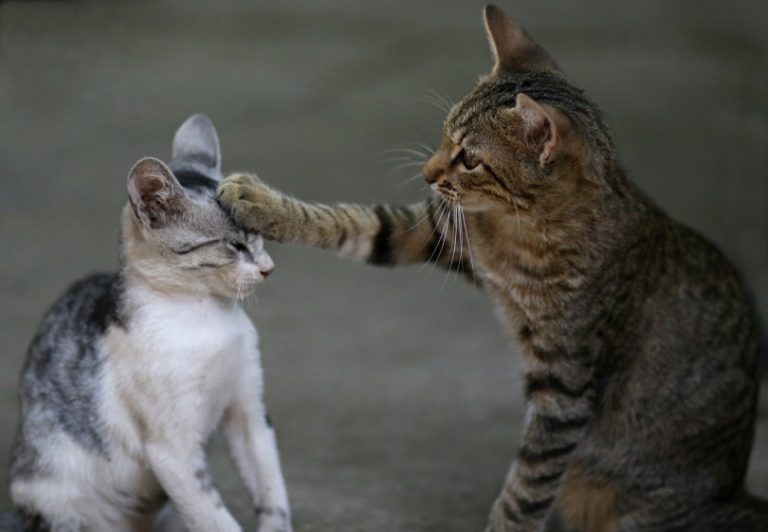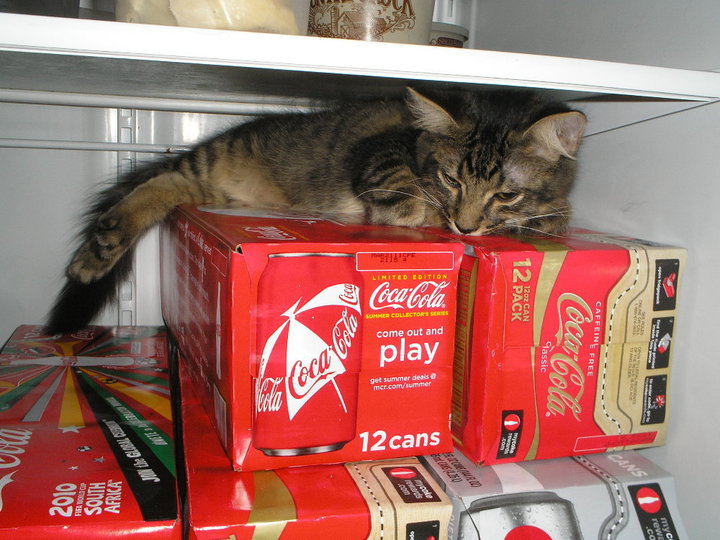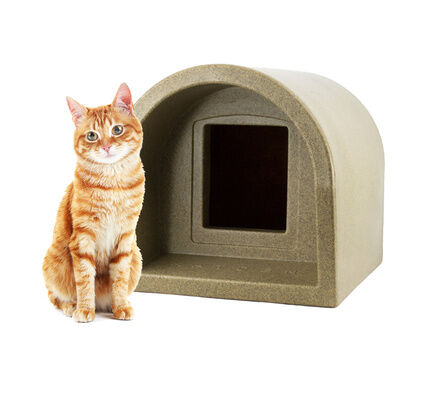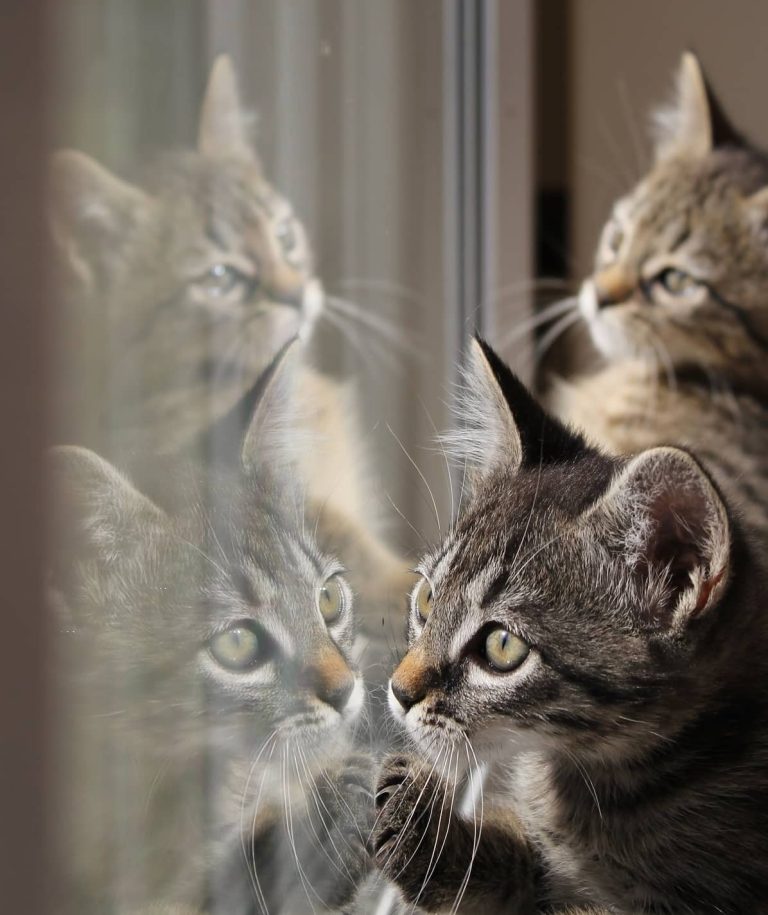Why Are Cats Afraid of Thunder?
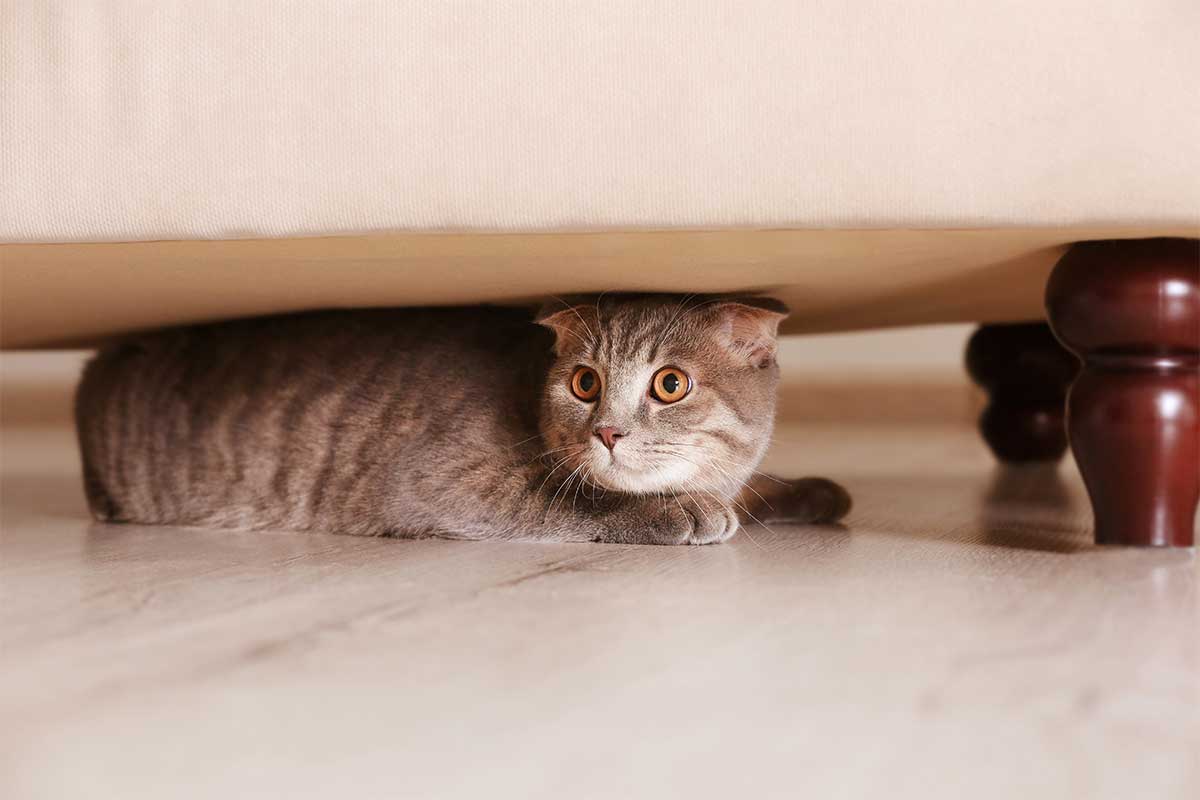
Cats are afraid of thunder due to the loud noise and vibrations it creates. These factors can be overwhelming and trigger fear in cats.
Cats, known for their independent and mysterious nature, can exhibit surprising reactions to various stimuli. One of the most peculiar behaviors observed in cats is their fear of thunder. Unlike humans who may find thunderstorms awe-inspiring or thrilling, cats often become apprehensive and even terrified during these natural phenomena.
But why exactly are cats afraid of thunder? The answer lies in understanding their acute sensitivity to sound and vibrations. Thunder, with its booming noise and powerful vibrations, can easily overwhelm a cat’s delicate senses, triggering a fear response. This heightened fear can manifest in various ways, such as hiding, trembling, or seeking comfort from their human companions. To better comprehend this intriguing feline behavior, let’s explore the reasons behind a cat’s fear of thunder and how their instincts play a crucial role in their survival.
Understanding Feline Fear: Thunder And Cats
Cats have a reputation for being fearless and independent creatures. However, when it comes to loud and sudden noises like thunder, many cats display signs of fear and anxiety. Understanding the reasons behind this fear can help us better support our feline friends during stormy weather or other noisy situations.
Thunder As A Common Trigger For Cat Fear
One of the most common triggers for cat fear is thunder. As a powerful natural phenomenon, thunder produces loud and booming sounds that can startle even the bravest of cats. The suddenness and intensity of thunderclaps can disrupt their sense of security, causing them to feel vulnerable and anxious.
Sensitivity To Loud Noises In Cats
Cats have well-developed senses, and their hearing is particularly acute. They can detect sounds at higher frequencies and greater distances than humans, making them more sensitive to loud noises like thunder. The volume and intensity of these sounds can be overwhelming for cats and can trigger their instinctual fear response.
In addition to their sensitive hearing, cats also have a heightened sense of awareness. Their ability to perceive subtle movements and changes in their environment plays a role in their sensitivity to loud noises. When a loud noise like thunder disrupts their environment, it can be perceived as a potential threat, leading to fear and anxiety.
The Evolutionary Origins Of Fear Responses In Cats
The fear response to loud noises, such as thunder, has deep evolutionary roots in cats. Throughout history, the survival of their ancestors relied on being alert to potential dangers in their surroundings. Loud noises often signified the presence of predators or other threats, triggering a fight-or-flight response in cats.
This instinctual fear response allowed cats to stay safe and avoid potentially harmful situations. Even though domesticated cats no longer live in the wild, their genetic predisposition to react to loud noises remains. Thunder, with its sudden and alarming sound, activates this ancient survival mechanism, causing cats to feel fear and seek safety.
- Thunder is a common trigger for fear in cats due to its loud and sudden nature.
- Cats have sensitive hearing, and loud noises like thunder can overwhelm them.
- Their heightened sense of awareness contributes to their sensitivity to loud noises.
- The fear response to loud noises has evolutionary origins, helping cats stay safe in the wild.
The Physiology Behind Cat Fear: Thunder And The Nervous System
Have you ever wondered why your feline friend becomes fearful during thunderstorms? Cats possess a unique physiological system that often triggers fear responses. In this article, we will explore the role of the nervous system in cats’ fear of thunder, particularly focusing on the amygdala, the sympathetic nervous system, and the physiological changes that occur during a thunderstorm.
The Role Of The Amygdala In Fear Responses
The amygdala, a small almond-shaped structure located deep within the brain, plays a crucial role in processing emotions and fear responses in cats. It acts as a sort of “fear center” and is responsible for detecting potential threats or danger in the environment.
When cats hear the loud booms of thunder, the amygdala becomes activated, triggering a fear response. This activation results in various physiological changes that prepare the cat’s body to either confront the threat or flee.
How The Sympathetic Nervous System Reacts To Loud Noises
The sympathetic nervous system is a branch of the autonomic nervous system that rapidly mobilizes the body’s resources in response to perceived threats or stressors. When cats hear thunder, the sympathetic nervous system springs into action.
During a thunderstorm, the sympathetic nervous system releases a surge of stress hormones, including adrenaline, throughout the cat’s body. This hormonal response helps the cat prepare for a fight-or-flight response, increasing the cat’s overall alertness and readiness to react to potential danger.
Increased Heart Rate And Adrenaline Release In Cats During Thunderstorms
The release of adrenaline during a thunderstorm not only heightens a cat’s alertness but also leads to physiological changes such as an increased heart rate.
A cat’s heart rate may significantly elevate during a thunderstorm due to the surge of adrenaline. This rapid increase in heart rate helps pump oxygenated blood to their muscles, enhancing their physical ability to respond to an impending threat. Additionally, the increased heart rate might also cause some cats to exhibit trembling or shaking as a result of the adrenaline rush.
The fear of thunder in cats can be attributed to the interplay between the amygdala, the sympathetic nervous system, and the subsequent physiological changes that occur during a thunderstorm. Understanding the intricate physiology behind this fear can help cat owners provide appropriate support and comfort to their furry companions during storms.
Behavioral Indications Of Cat Fear: Signs And Symptoms
Cats display various behavioral indications of fear during thunderstorms, such as hiding, trembling, excessive grooming, or urinating outside the litter box. Understanding these signs can help pet owners provide comfort and support during times of stress.
Hiding Or Seeking Shelter During Thunderstorms
One of the most common behavioral indications of fear in cats during thunderstorms is their instinct to hide or seek shelter. You may notice your feline companion trying to squeeze into small spaces, such as under furniture or inside closets, in an attempt to find safety and security from the loud noises and vibrations caused by thunder. Cats gravitate towards enclosed spaces because they associate them with protection and an increased sense of security.
During a thunderstorm, it is important to create a safe and comfortable space for your cat. Consider setting up a designated “safe room” equipped with their bed, toys, and a hiding spot like a covered cat bed or a cardboard box. This designated space can provide them with a familiar and secure environment, helping to alleviate their fear and anxiety during thunderstorms.
Vocalizations And Meowing In Response To Thunder
Cats commonly exhibit vocalizations and meowing as a response to the loud claps of thunder. Just like humans, they may express their fear and discomfort through various vocal cues. Some cats may yowl, hiss, or growl, while others may meow excessively. This vocalization is a way for cats to communicate their unease or distress.
It’s essential to remain calm and provide reassurance to your cat during thunderstorms. Talking to them in a soothing voice and maintaining a calm and relaxed atmosphere can help alleviate their anxiety. You can also consider using white noise or soft background music to distract them from the loud thunder noises.
Destructive Behavior Or Attempts To Escape During Thunderstorms
Another sign of fear in cats during thunderstorms is destructive behavior or attempts to escape. Your cat may scratch furniture, knock down objects, or engage in other destructive activities as a manifestation of their fear and anxiety. In some cases, cats may even attempt to escape outside in their desperate search for safety.
To prevent destructive behavior, ensure that your cat has access to appropriate outlets for their anxiety. Provide them with scratching posts, interactive toys, or puzzle feeders to keep their minds engaged and alleviate stress. Additionally, ensure that all windows and doors are securely closed during thunderstorms to prevent your cat from escaping outside where they may be at risk.
By recognizing these behavioral indications, you can better understand and address your cat’s fear of thunderstorms. Providing a safe and comforting environment, offering reassurance, and redirecting their anxiety towards positive outlets can help your feline friend navigate through thunderstorms with minimal stress and fear.
Addressing Cat Fear: Tips For Helping Cats Cope With Thunder
When it comes to thunderstorms, cats can exhibit fear and anxiety just like humans do. The loud noises, flashing lights, and sudden changes in atmospheric pressure can be overwhelming for our feline friends. As responsible pet owners, it is essential for us to help our cats cope with thunder and create a safe and comforting environment for them during storms. In this article, we will discuss some practical tips to address cat fear and help our feline companions feel more relaxed and secure during thunderstorms.
Creating A Safe And Calming Environment During Storms
During thunderstorms, it is crucial to create a safe and calm environment to reduce your cat’s anxiety. Here are some steps you can take:
- Close all windows and doors to minimize noise and block out the lightning flashes.
- Draw the curtains or blinds to further reduce visual stimuli.
- Turn on soothing background noises, such as soft music or a white noise machine, to mask the sounds of thunder.
- Ensure your cat has access to a familiar and comfortable space, like a quiet room or their favorite hiding spot.
Providing Hiding Places Or Safe Spaces For Cats
Cats often seek refuge in hiding places when they are scared, and thunderstorms are no exception. Providing hiding spots can offer a sense of security and comfort for your cat. Here are a few suggestions:
- Place a cozy cat bed or a soft blanket in a secluded area where your cat can retreat.
- Create hiding spots by using cardboard boxes, cat caves, or specially designed cat furniture.
- Make sure these hiding places are easily accessible and located in quiet areas of your home.
- Keep in mind that some cats prefer high spots, so providing elevated perches or shelves can also be beneficial.
Using Positive Reinforcement And Desensitization Techniques To Reduce Fear Responses
Positive reinforcement and desensitization techniques can play a significant role in helping your cat overcome their fear of thunder. Here are some approaches to consider:
- Reward your cat with treats or praise when they remain calm during a storm, reinforcing positive behavior.
- Distract your cat with interactive toys or engage them in play to redirect their focus from the thunder.
- Gradually expose your cat to recorded thunderstorm sounds at a low volume and reward them for staying calm.
- Over time, increase the volume to desensitize your cat, ensuring that they associate the sounds with positive experiences.
By implementing these measures, you can assist your cat in managing their fear of thunder and creating a sense of calm during storms. Remember to be patient, as each cat’s response may vary. With time, love, and a supportive environment, you can help your feline friend face thunderstorms with greater ease and confidence.
Seeking Professional Help: When To Consult A Veterinarian Or Animal Behaviorist
Identifying severe anxiety or phobia in cats can be a challenging task for cat owners. While some cats may show mild signs of distress during thunderstorms, others may exhibit severe anxiety or phobia. Knowing when to seek professional help from a veterinarian or animal behaviorist is crucial in ensuring your cat’s well-being and emotional health.
Identifying Severe Anxiety Or Phobia In Cats
Severe anxiety or phobia in cats during thunderstorms can manifest in various ways. Look out for these signs to determine if your cat requires professional intervention:
- Excessive vocalization, such as constant meowing or yowling.
- Attempted escape or hiding in small, confined spaces.
- Intense shaking or trembling.
- Aggressive behavior, including growling or hissing.
- Urinating or defecating outside the litter box.
- Excessive grooming or self-mutilation.
Possible Treatment Options Such As Medications Or Behavior Modification Therapies
When your cat’s fear of thunder becomes severe, professional help becomes necessary. Veterinarians and animal behaviorists can offer various treatment options to alleviate your cat’s anxiety:
- Medications: In some cases, anti-anxiety medications may be prescribed to help your cat manage their fear. These medications can help reduce stress and promote a calmer state of mind.
- Behavior modification therapies: Working with a certified animal behaviorist can help identify triggers and develop a tailored behavior modification plan. Techniques such as desensitization and counter-conditioning can be implemented to gradually expose your cat to the sounds of thunder in a controlled and positive manner.
Working With Professionals To Develop A Tailored Approach For Managing Cat Fear
When seeking professional help, veterinarians and animal behaviorists will take a comprehensive approach to manage your cat’s fear of thunder. They will assess your cat’s specific needs and develop a tailored treatment plan, which may include a combination of medications, behavior modification, and environmental changes. It’s important to work closely with these professionals to ensure the best outcome for your furry friend.
By seeking professional help, you can provide your cat with the support they need to overcome their fear of thunder and lead a happier, more relaxed life.
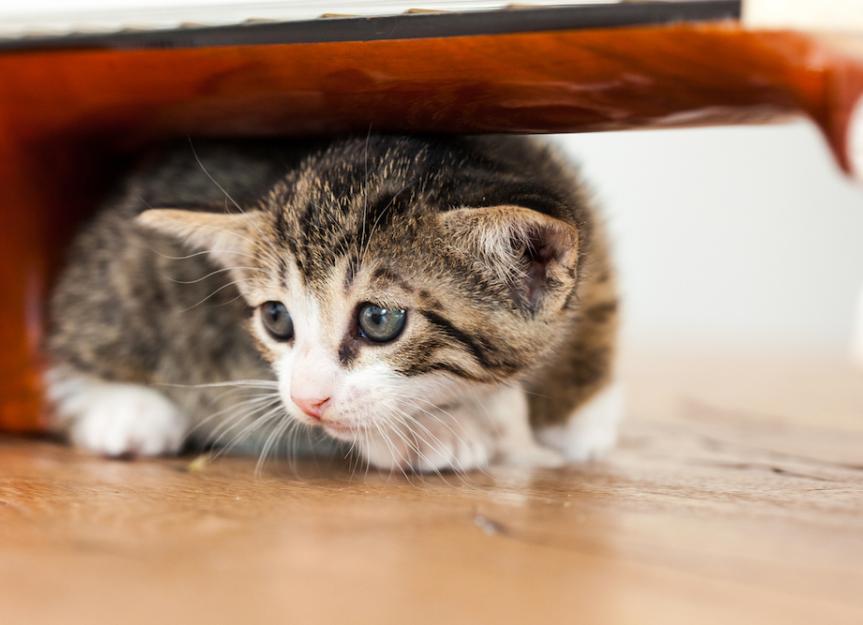
Credit: www.petmd.com
Frequently Asked Questions On Why Are Cats Afraid Of Thunder?
Why Are Cats Afraid Of Thunder?
Cats are afraid of thunder because it’s loud and unpredictable. The sudden loud noises and vibrations can startle them and trigger their natural fear response. Additionally, cats have sensitive hearing, so the loud thunderclaps can be overwhelming for them.
Do All Cats Fear Thunder?
Not all cats fear thunder, but many do. Some cats may be more sensitive to loud noises in general and easily frightened by thunder, while others may show little to no reaction. It varies from cat to cat and depends on their individual temperament and experiences.
How Can I Help My Cat During A Thunderstorm?
During a thunderstorm, you can create a safe and comfortable space for your cat by providing a quiet and secure area where they can retreat. Close windows and curtains to minimize noise and flashes of lightning. You can also try playing calming music or using pheromone diffusers to help alleviate their anxiety.
Can Thunderstorms Cause Long-term Anxiety In Cats?
Thunderstorms can potentially cause long-term anxiety in cats. If a cat has a particularly traumatic experience during a storm, it may develop a fear or phobia that persists even after the storm has passed. It’s important to monitor your cat’s behavior and seek veterinary advice if severe anxiety symptoms persist.
Conclusion
Cats’ fear of thunder is a result of their heightened sensitivity to loud noises. Their acute hearing allows them to pick up on even the slightest rumblings of thunder, which can trigger a primal instinct to seek shelter. Additionally, the unpredictable and booming nature of thunder can also startle them.
Understanding why cats are afraid of thunder can help us provide them with comfort during storms and alleviate their anxiety. So, next time a storm rolls in, be sure to create a safe and cozy environment for your feline friend.

